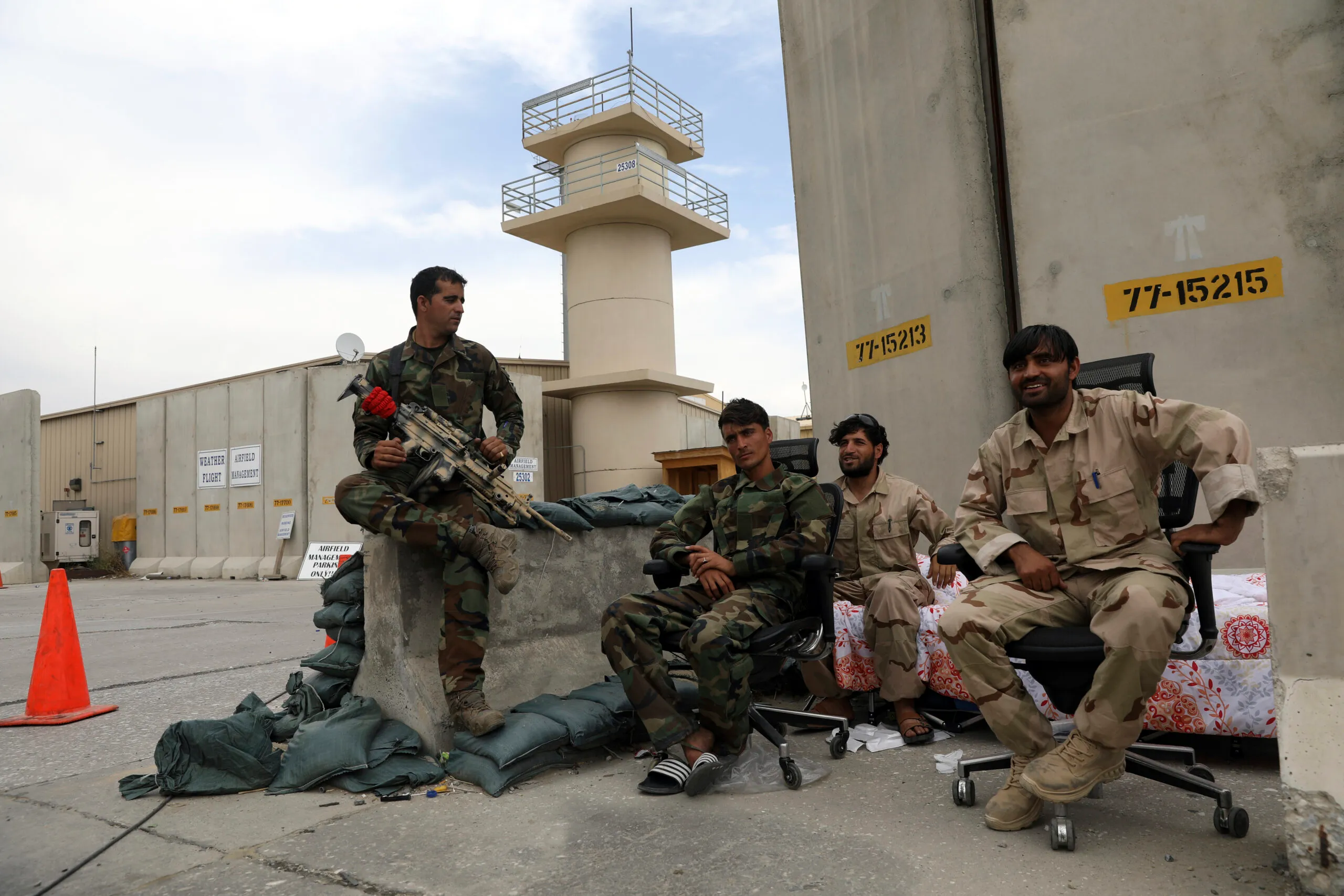One year after the U.S. military withdrew its troops from Afghanistan and the Taliban regained control of the country, top lawmakers and White House officials are still clashing over who, or what, is to blame for the collapse of the Afghan government.
Republicans on the House Foreign Affairs Committee released a report over the weekend detailing the findings of their investigation into the chaotic withdrawal, concluding a “complete lack and a failure to plan,” Rep. Michael McCaul (R-TX), the committee’s chairman, told CBS News’s Face the Nation on Sunday. The White House disputed the findings, decrying the report as being “riddled with inaccurate characterizations, cherry-picked information, and false claims,” according to a memo.
BIDEN’S WITHDRAWAL FROM AFGHANISTAN ACCELERATED DOWNWARD SPIRAL IN POLLS

Here’s what we know about how the Afghanistan pullout unfolded last year:
April 14, 2021
President Joe Biden announces that the United States will remove all its troops from Afghanistan by Sept. 11 — the 20-year anniversary of the 9/11 terrorist attacks. The removal sought to pull out the last of the troops, around 2,500 service members, without leaving any behind.

That decision, paired with the Trump administration’s deal with the Taliban to limit fighting, was a critical event that led to the collapse of the Afghan government.
July 2
The U.S. vacates its troops from Afghanistan’s Bagram Airfield, which served as the centerpiece of the country’s military effort for 20 years. The withdrawal comes on the same day Germany and Italy withdrew their troops from Afghanistan and relegated the U.S. evacuation flight operation to the urban airport located in Kabul.
The sudden evacuation of troops causes the air base to be ransacked by looters before Afghan troops can take control.
July 8
Biden announces the final withdrawal date of all U.S. service members from Afghanistan would be Aug. 31, two weeks earlier than initially expected. Despite concerns the pullout would leave the Afghan government vulnerable to the Taliban, Biden dismisses predictions of a takeover as “not inevitable.”
Biden further defends his decision by saying the Afghan army was “better trained, better equipped and … more competent in terms of conducting war.”
July 21
As the U.S. works to reduce the number of troops in the country, Chairman of the Joint Chiefs Gen. Mark Milley reports that half of all districts in Afghanistan are under Taliban control.

Aug. 15
Just two weeks before the U.S. military is set to be completely removed from the country, Taliban fighters overtake the capital city of Kabul — marking the fall of the Afghan government after months of offensives. The same day, President Ashraf Ghani flees the country.
With the rapid Taliban takeover, the U.S. commits to deploying another 1,000 troops in response to the fall of Kabul.
Aug. 16
The U.S. commits to sending another 1,000 troops to Afghanistan to assist in evacuating U.S. citizens and allies, bringing the total to 6,000 additional troops. Biden acknowledges the withdrawal effort as “hard and messy” as chaos erupts at Kabul International Airport from thousands of Afghans seeking to escape.
Aug. 26
An ISIS-K member carries out a suicide attack at the Kabul airport, killing 13 U.S. service members and at least 170 Afghans during the mass evacuation effort. Among the service members killed are 11 Marines, one Army paratrooper, and one Navy corpsman.

Despite the attack, Biden maintains that the withdrawal timeline will continue as planned but pledges retribution, telling those responsible, “We will hunt you down and make you pay.”
Aug. 29
Days after the suicide attack, the U.S. military launches a drone strike targeting someone they believe to pose a threat to U.S. forces assisting with evacuation efforts out of the Kabul airport. (It was later discovered that the target was wrongly identified and had no ties to any terrorist group in Afghanistan.)
In the attack, the presumed target, later identified as an aid worker, dies along with nine others. Among the dead are seven children.
Aug. 30
The final U.S. military plane leaves Afghanistan after more than 120,000 U.S. citizens and allies are evacuated from the country. Hundreds are left behind. Shortly after the last plane departs Kabul, Taliban soldiers enter the airport to declare victory.
CLICK HERE TO READ MORE FROM THE WASHINGTON EXAMINER
Aug. 31
After the chaotic withdrawal comes to a close, Biden defends the Afghanistan evacuation decision.
“I was not going to extend this forever war, and I was not extending a forever exit,” he says.
The president acknowledges that some U.S. citizens had been left behind in Afghanistan, estimating “about 100 to 200 Americans remain in Afghanistan with some intention to leave.”

